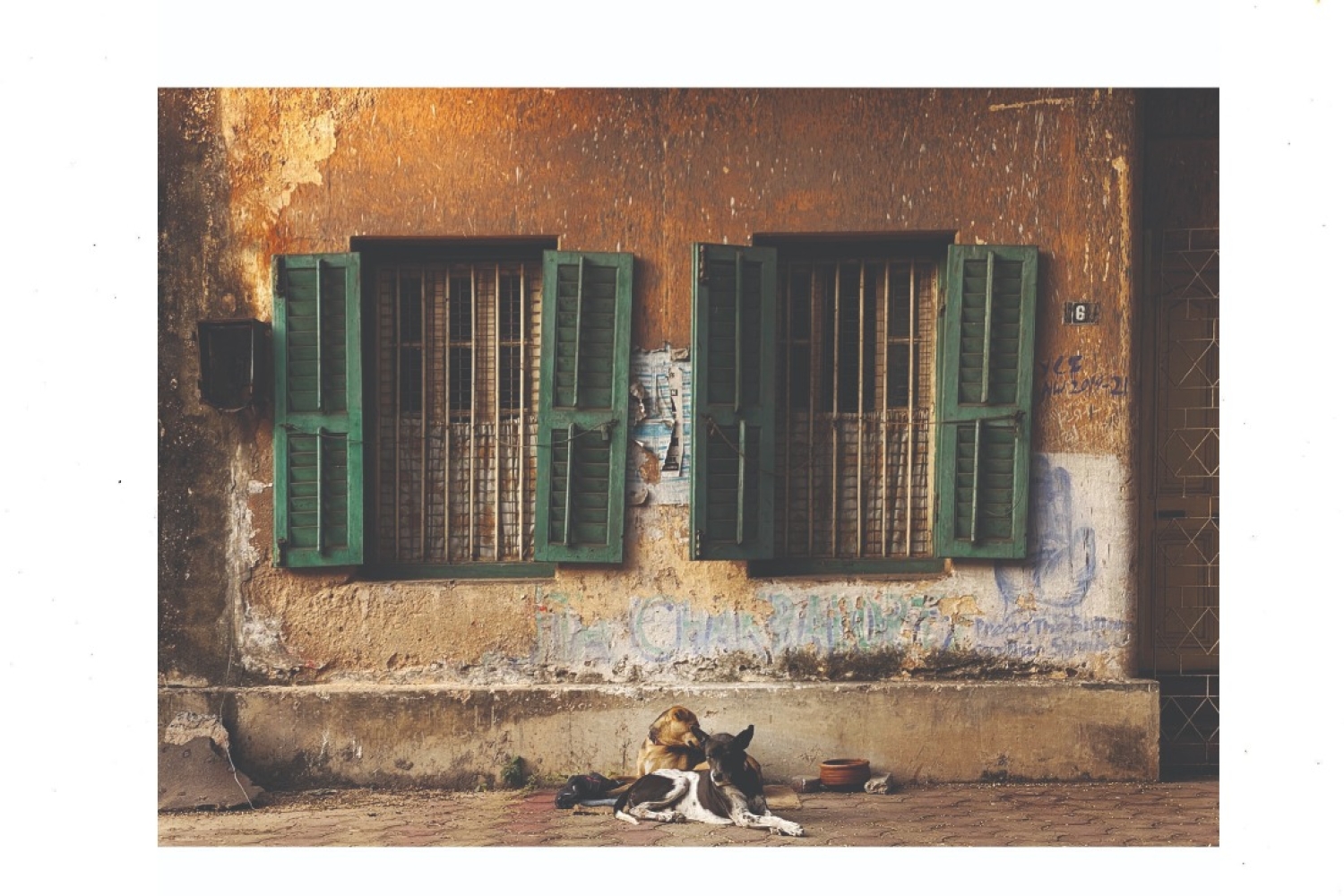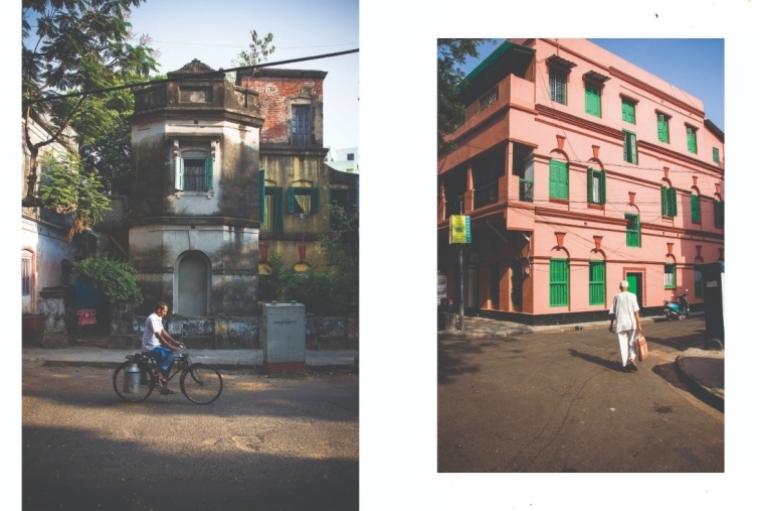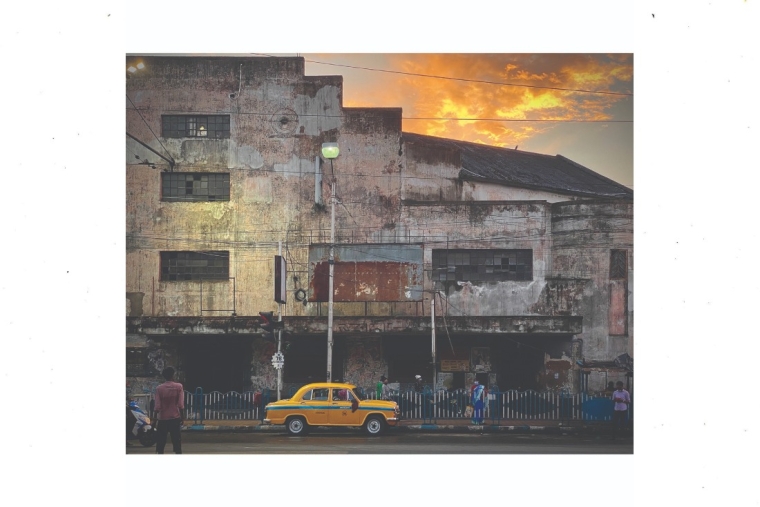

Calcutta Houses is an archival tableaux of photographs that seeks to carefully document countless homes within the city of joy. As opposed to grand structures open to the public, residential architecture presents a window into daily life, routine of the everyday, an understanding of neighbourhoods, and life in general. Crisis has recently doomed upon Calcutta, as many of these homes have begun to disappear, and familiar streets have become filled with gaping holes. “As helpless as we felt to stop this destruction, we decided to photograph and record as many as possible. Despite the sense of inevitability of change, these living memories have sparked not only the obvious nostalgia, but a greater interest in our familiar surroundings and a deeper appreciation of what fashions the eccentric and anachronistic charm of Calcutta.” Like Susan Sontag said, “Photographs allow us to slice out a moment and freeze it, such that all photos testify to time’s relentless melt.” On that note, we’re in conversation with Manish Golder, one of the founders of the initiative, about all things history, houses, and heritage.
Can you recall how and when Calcutta Houses came to be?
Sometime around 2013, two close friends and I began taking photos of picturesque, antique homes around the nooks and corners of Calcutta, without realising their role in shaping the visual landscape of the city. Calcutta is a unique city, in that it molds itself to preserve buildings from a bygone era. The heartbreaking, unexpected disappearance of houses in the city intersected with a rising popularity of the phone camera and Instagram. It seemed like a clever platform to inspire thoughts of conservation among the general public and showcase visual content. Honestly speaking, the reaction we received was a complete surprise. The idea was to create a community and harbour conversations around the safekeeping of these homes. A mixture of writers, historians, archivists and documentarians follow us today, some of whom include William Dalrymple and Amitav Ghosh. In essence, without our realisation, we pioneered a movement that encouraged the narrativisation of cities all across India.

What does the process of finding these houses look like?
Even though I live in South Calcutta, I’m familiar with most areas around the city. If I come across striking houses as I travel through different neighbourhoods, I always make a mental note to return to the locale and photograph them. I guess there exists a method to the madness, but it is mostly serendipitous — I’m informed by my long walks, and my knowledge of the city’s alcoves. Once you board the journey of cataloging architecture, your eye gets trained to be on the lookout, round-the-clock. Over recent years, people have also personally reached out and asked me to post about their houses on the page, and even invited me over and let me inspect it closely, and take photographs.
Photography can be tricky and intrusive at times especially in terms of people’s tangible property. How do you navigate this sphere and what are some challenges you've faced?
Specific to Calcutta’s history, around the ‘80s, when heritage reforms were drawn up for the city, many residents were not stakeholders in the process, which was considered to be unfair. The so-called ‘heritage tag’ for buildings around the city came to be considered as more of a burden than anything else, since it creates bureaucratic obstacles. Occasionally, there exists a sense of insecurity and hostility amongst residents towards people like us, who are seen as threats to their safety and wellbeing. I can even recall an unpleasant experience wherein some homeowners demanded that we take down some photos we had posted of their house. Back in the day, I used to be looked upon with suspicion each time I stopped to document a house.
I must say that people today are far more cognisant and aware of built heritage, which is especially encouraging. I must also mention that a lot of people are also quite proud of their homes, and appreciate documentation. Even last week, a kind woman invited me into the premises of her residence. Even image making has undergone so much change — phone cameras are a lot less invasive than regular cameras, which has made my job a tad bit easier. Establishing an environment of trust between homeowners and archivists is what we’ve been working towards since our inception, and we’ve harboured a community for the same.

Do you or the other founders have a background in architecture? Has photography improved your architectural sensibilities?
None of us have a background in architecture. Through the course of the last decade, I’ve read several accounts and books, while also staying in touch with the conservationists of the city, which helps me absorb information about the architectural attributes of these houses. The other day, I was at a house with grand corinthian columns — these contain a specific, recurring motif called the acanthus, which is a Mediterranean plant originating from Greece. Knowledge on architectural details such as recurring motifs helps me date buildings easily. Similarly, Art Deco is a popular, prevalent design style for old residences in Calcutta. The romance of this technique can be dated back to the 1950s and 1960s. A couple of years back, I came across a fantastic house, constructed using classical elements that wouldn’t have looked out of place in a city like Miami. I have many architect friends, and I hope to broaden my understanding of it as I go on thinking about building a digital archive.
What does the future look like for Calcutta Houses?
I’d definitely like to explore going house by house, scaling them, and plotting architectural plans for each of them. Geoffrey Bawa's protege, a Sri Lankan architect C Anjalendran, undertakes drawings and illustrations of beautiful buildings in Sri Lanka, thereby immortalising them. I’d like to take on a similar multi-media approach in Calcutta as well, since technology excites me and tools are now easily accessible.
You can find more of the documentation work Calcuta Houses does here.
Words Neeraja Srinivasan
Date 30-06-2023